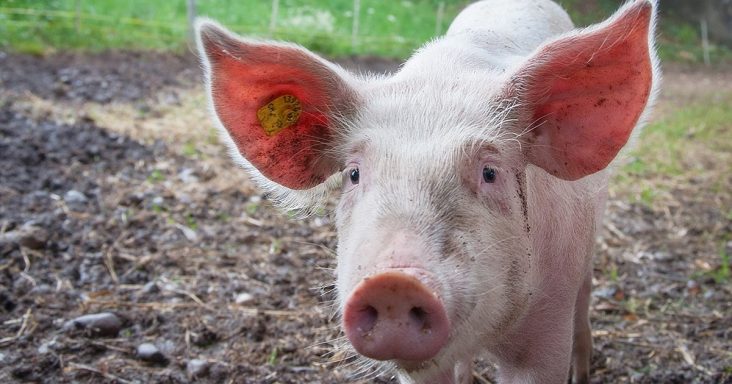Swine research could boost hog production in Arkansas
by February 6, 2020 9:57 am 925 views

The Spanish explorer Hernando de Soto brought swine to Arkansas when he explored the region in 1541 and pigs have been a staple livestock sector in the state ever since. Despite the long relationship between pigs and humans, there’s still a lot about swine, and their microbiome, that is still unknown. A group of scientists in the Natural State is trying to broaden that knowledge base.
A team of animal science researchers from the University of Arkansas System Division of Agriculture recently published their findings from a longitudinal study of the swine gut microbiome.
The article, “Longitudinal investigation of the swine gut microbiome from birth to market reveals stage and growth performance associated bacteria,” was first published online in late July and features contributions from a number of researchers from the division’s Arkansas Agricultural Experiment Station, including Xiaofan Wang, Tsungcheng Tsai, Feilong Deng, Xiaoyuan Wei, Jianmin Chai, Joshua Knapp, Jason Apple, Charles V. Maxwell, Jung Ae Lee, Ying Li and Jiangchao Zhao.
“We are excited to publish our research on the Microbiome journal,” said Zhao, associate professor of animal science. “This is an excellent team effort.”
The gut microbiome refers to the microorganisms that co-exist within the gastrointestinal environment of an animal — in this case, within swine. A longitudinal study refers to research in which the same data is observed repeatedly over a defined period of time.
The article details research that sought to fill in the existing knowledge gap which shows that, despite recent advances in the understanding of the swine gut microbiome at different growth stages, a comprehensive longitudinal study of the lifetime dynamics from birth to market of the swine gut microbiome is still lacking.
“Following the human microbiome research area, lots of progress has been made in the swine gut microbiome in recent years,” Zhao said. “However, most of these studies are either cross-sectional or sporadic with few sampling points. Many important biological and ecological questions are still unknown in this field.”
The study itself involved the repeated collection of a total of 273 rectal swabs from 18 pigs during the lactation, nursery, growing, and finishing stages. DNA was then extracted from these samples and subjected to sequencing, before being analyzed using a process called the Deblur algorithm. The final results produced observable, distinct shifts in microbiome structure along different growth stages. It was also discovered that diet, especially crude fiber from corn, was a major factor in shaping the swine gut microbiome.
“The longitudinal design with many sample collections from the same set of pigs across different growth stages allowed us to understand how the swine gut microbiome changes over time and to identify the passengers and residents of the swine gut,” said Zhao.
Utilizing the results from this study, the group concluded that the distinct stage-associated swine gut microbiome may be determined by the differences in diet and/or gut physiology at different growth stages. The results also emphasize the importance of optimizing stage-specific probiotics aimed at improving animal health and productivity.
This comprehensive longitudinal study expanded the understanding of the swine gut microbiome and addressed several key ecological questions, such as: How does the swine gut microbiome change from birth to market across all the different growth stages? And, what are the key drivers shaping the swine gut microbiome during these stages?
“A well-designed and controlled longitudinal study with a parallel validation trial is critical to reveal the underlying mechanisms of the swine gut microbiome development,” said Zhao. “This study not only filled our knowledge gaps, but also allowed us to identify several growth performances associated with bacterial strains.
“Dr. Xiaofan Wang, the lead author of this paper, has isolated these strains by a culturomics approach,” Zhao said. “When we fed pigs with these beneficial bacteria, they significantly increased the growth performance of pigs. This is a great example of how to translate basic research to animal production.”
Understanding a pig’s microbiome could be critical in maintaining and growing this livestock sector in the state. There are an estimated 1.2 million hogs raised in Arkansas each year, according to Arkansas Farm Bureau. Pork production in the state exceeds $100 million per year. About 95% of hogs raised in the state are done so under contract.
Americans consume about 50 pounds of pork per year on average.
Pork is a $23.4 billion industry in the U.S. each year. There are more than 60,000 pork producers nationwide and the sector generates about 55,000 jobs, according to the National Pork Council. Pigs consume billions of bushels of grain which helps to prop other agricultural sectors, too.
